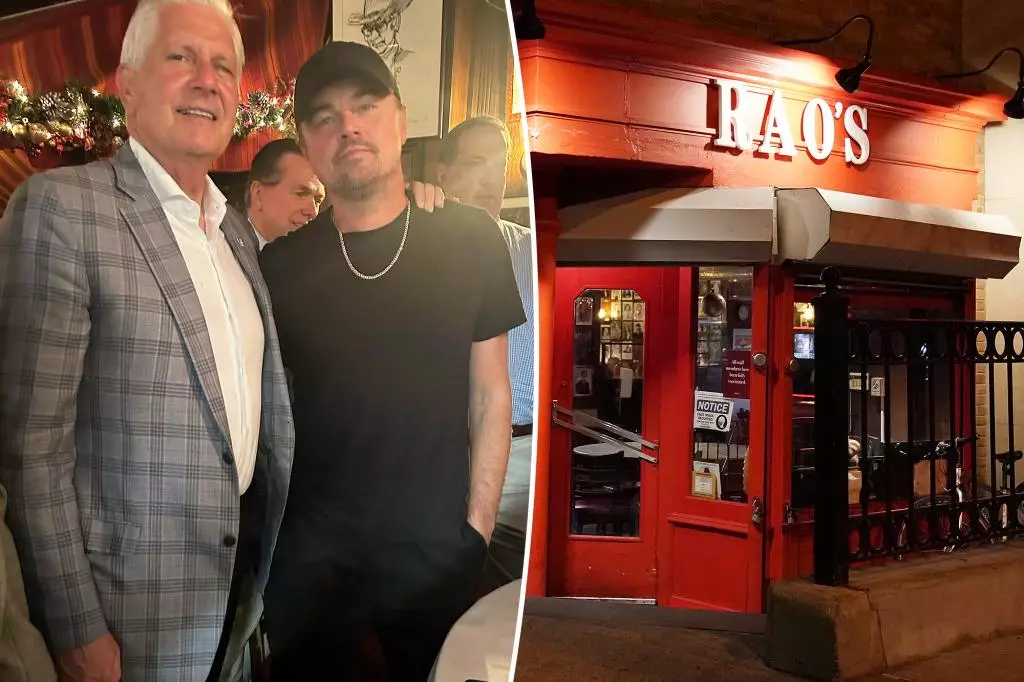In the heart of East Harlem lies Rao’s, a dining destination so exclusive that securing a reservation feels more like winning the lottery than making a dinner plan. Recently, this legendary eatery became the backdrop for a star-studded gathering, drawing in none other than Leonardo DiCaprio, the quintessential Hollywood A-lister. Known for his environmental activism and a string of box-office hits, DiCaprio’s presence at such an inconspicuous yet iconic restaurant proves that the allure of simpler pleasures can transcend the limelight.
Him being spotted here, amidst figures like Nassau County Executive Bruce Blakeman and entrepreneur Andrew Murstein, serves as a reminder that Hollywood doesn’t just thrive in glitzy venues; it thrives in authentic experiences. Witnesses reported that DiCaprio was particularly generous, engaging warmly with fans and taking photos with guests, bridging the gap that often separates celebrities from the public. It is refreshing to see an actor of his caliber engaging in such heartwarming interactions, a human touch that can sometimes be lost in the chaos of fame.
The Ambitious Vision Behind the Dinner
Murstein, a board member of the Hamptons International Film Festival, envisioned this VIP dinner as more than just a gastronomic experience; it was a networking opportunity to discuss turning Nassau County into a booming hub for film productions—dubbed ‘Hollywood East’. The economic implications are staggering; an estimated $533 million in impact thanks to establishments like Grumman and Gold Coast Studios showcases the potential that the area holds for filmmakers and investors. This ambitious vision reflects an emerging trend: the desire to diversify locations for film production, particularly in a world grappling with over-saturated filming locations in major cities like Los Angeles.
DiCaprio’s association with the region is not merely a fleeting moment; the actor’s ties to “The Wolf of Wall Street,” filmed partly in Nassau County, underscore a growing connection between Hollywood and local communities. Conversations at the dinner likely centered on how to further strengthen that connection and promote the area as a prime location. The careful orchestration of guests, which included DiCaprio’s co-star Bo Dietl and radio personality Sid Rosenberg, indicates a deliberate effort to gather influential voices who can amplify this vision.
A Glimpse Into the Personal Lives of Influential Guests
Interestingly, the night was not devoid of personal anecdotes. As sources indicated, Blakeman, once married to Nancy Shevell—now Mrs. Paul McCartney—had a light-hearted moment regarding the absence of Beatles music on Rao’s jukebox, with an exclusive nod to Sinatra’s timeless classics instead. Perhaps these details reveal the layers of personal and professional history that often intertwine in the corridors of power and fame. The gathering in East Harlem was a microcosm of how familial ties, celebrity culture, and local ambitions converge in this bold new vision for the area.
Much like how a fine meal at Rao’s delights the senses, this event was rich with opportunities for economic revival and cultural dynamism. While DiCaprio indulged in sumptuous Italian cuisine, he unwittingly became part of something much larger—a movement poised to redefine not only film production in New York but also the very essence of community collaboration and artistic ambition. The mingling of these prominent figures indicates that local dreams can resonate all the way to Hollywood, creating a ripple effect that inspires many in unexpected ways.

